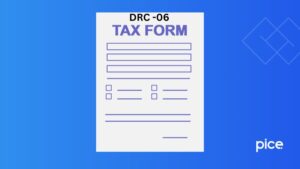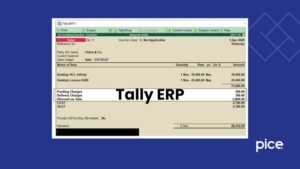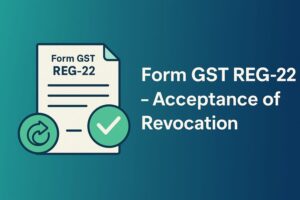Calculating Input Tax Credit
- 31 Aug 24
- 9 mins
Calculating Input Tax Credit
Key Takeaways
- Input Tax Credit (ITC) allows businesses to reduce their GST liability by offsetting the GST paid on business purchases against their output tax.
- To claim ITC, taxpayers must meet specific conditions, including having a valid invoice, receiving the goods or services, and ensuring that the supplier has paid the GST to the government.
- ITC calculation involves determining the eligible credit after accounting for non-business use, exempt supplies, and ineligible items, ensuring only the correct amount is claimed.
- Reversal of ITC occurs in cases like non-payment of invoices within 180 days, personal use of inputs, or incorrect credit allocation, requiring the taxpayer to adjust their GST liability.
- The ITC reconciliation process ensures that the claimed credits match the supplier's declarations, and any discrepancies must be resolved to avoid issues with GST authorities.
Input Tax Credit (ITC) or simply input credit is a type of GST that you pay on goods purchased for the furtherance of business. Calculating ITC can be hassle-free if you know which things to consider and what to exclude. This blog elaborates on how to calculate ITC in GST to help you understand the process. Further, the blog highlights the concept of ITC and other related terms like reversal, reconciliation and eligibility for your convenience.
Understanding Input Tax Credit
Input Tax Credit is the GST that a registered taxpayer pays for the purchase of goods and services for business purposes. It helps reduce output tax liability on outward supplies for a registered person.
For instance, the tax payable on output = ₹500
Tax paid on input = ₹300
Then you can claim an input tax credit of ₹300
₹200 added to output tax liability reduces your tax burden or tax liability for inputs purchased for business operation.
💡 If you want to pay your GST with Credit Card, then download Pice Business Payment App. Pice is the one stop app for all paying all your business expenses.
Eligibility for Claiming ITC
A registered taxable person can claim ITC under GST. However, you must meet all the conditions as follows:
- The purchaser should have tax invoices or debit note issued instead of an invoice by the supplier.
- You must receive the goods before claiming ITC.
- Ensure you have filed the returns before claiming ITC.
- The supplier has to pay the taxes charged to the government before you claim ITC.
- If you receive goods in instalments or lots, you need to receive the last lot before claiming ITC.
- If you have claimed depreciation on the tax component of capital goods, you will not be eligible for ITC claims.
- When a person is registered under the composition scheme, he/she will not be eligible for claiming input tax credits in respect of the purchases.
Eligible Items for ITC Claims

You can claim ITC for goods and services used for business purposes solely. If you use goods and services for the following purposes, they will not be eligible for ITC claims. Here are the purposes for which you cannot claim ITC on inputs:
- Inputs used for personal consumption
- Exempt supplies
- Supplies for which ITC is unavailable
Calculating Input Tax Credit Under GST
Calculating ITC on goods or services used partly for business purposes can be seamless if you know the process. Here is the process for calculating input tax credit attributable in GST:
Step 1: Calculating Common Credit of Tax Paid
| Total input tax related to inputs and input services in a tax period | T |
| Less: Input tax on inputs and input services that are intended to be used exclusively for a non-business purpose | (T1) |
| Less: Input tax on inputs and input services that are intended to be used exclusively for exempt supplies | (T2) |
| Less: Input tax which is ineligible for a tax credit (Blocked credits) | (T3) |
| ITC Credited to Electronic Credit Ledger | C1 |
| Less: Input tax on inputs and input services that are intended to be used exclusively for taxable supplies including zero-rated supplies | (T4) |
| Common ITC available for apportionment | C2 |
Step 2: Credit Attributable to Exempt Supplies
D1= (E/F) x C2
D1 = The input tax credit amount attributable to exempt supplies
E = The aggregate value of exempt goods or services during the tax period
F = The registered person’s state’s total turnover during the tax period
C2 = Common credit available
Step 3: Credit Attributable to Non-Business Activities
D2 = 5% of C2
D2 = The input tax credit amount attributable to non-business purpose
Step 4: Calculating Total Eligible ITC
C3 = C2 – (D1 + D2)
C3 = The eligible input tax credit from the common credit
Steps to Claim ITC
Here is a stepwise guide you need to follow in order to claim ITC under GST:
Step 1: Visit the GST unified portal and log in. Navigate to the 'Services' option followed by the 'Return' and 'ITC Form' options in the drop-down list.
Step 2: Click ‘Prepare Online’ on the GST ITC-01 box and choose the appropriate option.
Step 3: Enter the details to create the invoice like GSTIN, invoice number, date and item details like goods type, description of inputs, unit quantity code, quantity, value and ITC amount claimed before you click on 'save'.
Step 4: Preview the entered details and click ‘Submit'.
Step 5: You will receive a pop-up alert. Click on it.
Step 6: Enter the information related to the Chartered Accountant like name, date of certificate issuance, membership number and other details.
Step 7: Select the declaration checkbox followed by the authorised signatory from the drop-down menu.
Step 8: The redirected page will show two options; one to proceed with a Digital Signature Certificate (DSC) or to proceed with Electronic Verification Code (EVC). For the former, you need to choose the certificate while for the latter you need to insert the OTP that you receive before you proceed to the final stage of completion.
Step 9: You will receive the Acknowledgement Reference Number (ARN) which you can use to track your claim status.
Reversing Input Tax Credit
There are certain situations that prompt reversal of input tax credit on inputs. Here are the situations when there is an ITC reversal:
- Non-Payment of Invoice Within 180 Days: If the invoice remains unpaid within 180 days of issuance of invoice, ITC will be reversed as per invoice rules.
- Credit Note Issued by Seller to Input Service Distributor: If a seller issues a credit note to an Input Service Distributor, there will be a reversal of ITC.
- Inputs Partly Used for Personal Use: If inputs are partly used for businesses and partly for personal use or any other non-business activities, ITC for the part utilised for personal use will be reversed.
- Capital Goods Partially Used for Non-Business Purposes and As Exempt Supplies: If you use capital goods for personal use or as exempt supplies, the part that you use for non-business purposes will exhibit a reversal of input tax credit. Thus, you have to bear the cost of capital goods used for personal use.
- ITC Reversed Is Less Than Required: If the ITC on exempt supplies or goods used for non-business purposes is more than the ITC reversed during the financial year, the difference will add up to your output liability. Further, it will attract interest and you can calculate it after furnishing or filing of return (annual return).
ITC Reconciliation Process
ITC that you claim should match the details that the supplier specifies in his or her GST return. In the case of any mismatch, the GST authorities notify both parties for reconciliation. You can reconcile your ITC claims using a GST return form in case of any mismatch in declarations between the purchaser and the supplier.
Afterword
As you already know how to calculate ITC in GST, you can seamlessly perform calculations for a hassle-free process. Estimating your ITC claim amount beforehand can help reduce your tax liability on outputs. Thus, you can make a lower payment of output tax. Payment of taxes on time can further help you optimise ITC on purchases.
However, ensure you attentively consider parameters like inputs used for non-business purposes to achieve accurate results. This acts as a complete supply chain solution for suppliers.
FAQs
How do I calculate my ITC?
Determine the total GST paid on inputs (goods and services) used for business purposes.
Subtract any ineligible ITC, such as GST paid on items used for personal consumption, exempt supplies, or goods/services for which ITC is not allowed.
Use the formula: Eligible ITC = (Total GST on inputs) - (GST on ineligible items).
For mixed-use inputs (business and non-business), apportion the ITC accordingly.
How do I find my ITC?
How do I check my ITC GST?
Log in to the GST portal with your credentials.
Navigate to "Services" > "Returns" > "Returns Dashboard".
Select the relevant financial year and period.
View the GSTR-2A or GSTR-2B form, which shows details of the ITC available based on the invoices uploaded by your suppliers.
What is ITC for GST?
What is the new rule of ITC in GST?
How to GST calculate?
Apply the applicable GST rate (e.g., 5%, 12%, 18%, or 28%) to the taxable value.
Use the formula: GST Amount = (Taxable Value) x (GST Rate).
The total price with GST = Taxable Value + GST Amount.
 By
By 
















